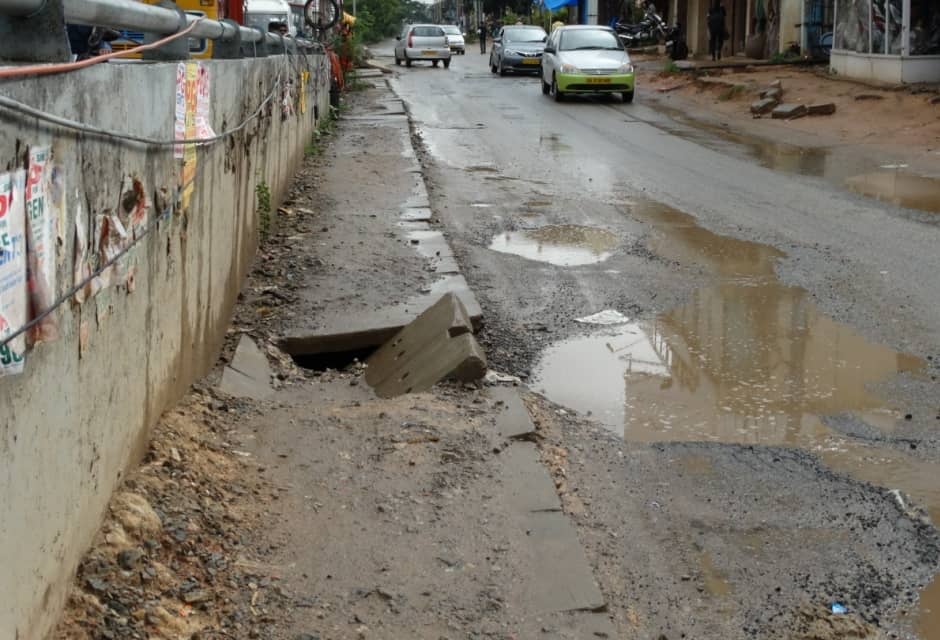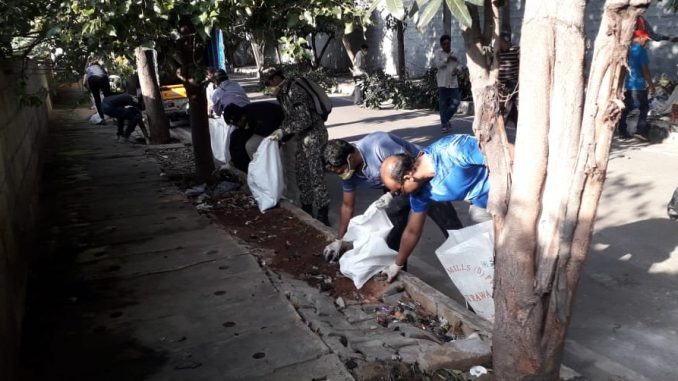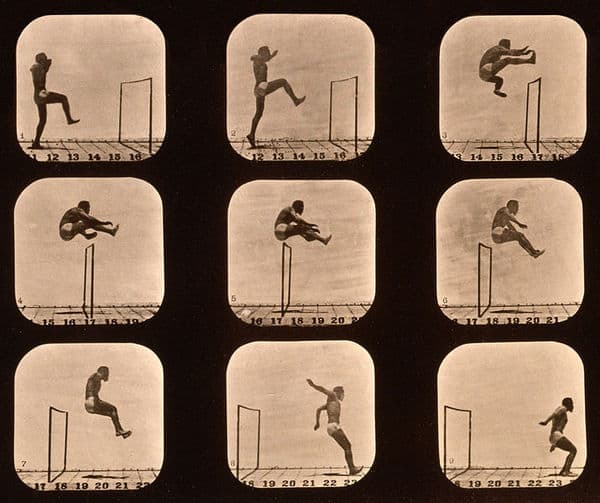On August 24, five months after Cubbon Park was made traffic-free, the Horticulture Department said that traffic would be allowed here again. This was despite BBMP passing the traffic-free Cubbon Park proposal on June 30 and the impassioned appeals of citizen groups like Heritage Beku.
For years, activists have been striving for a pedestrian-friendly Bengaluru but evidence suggests there is a long way to go. With its ill-equipped infrastructure for pedestrians, Bengaluru has the third-highest number of pedestrian fatalities among the top eight Indian metros. Pedestrian injuries and fatalities also account for the majority of road accidents in the city. However, pedestrians and their safety have never found rightful place in policy.
The focus of Bengaluru’s mobility plans is often on the 80 lakh motorised vehicles plying on road length of about 10,000 km, and upgrading roads to meet the demands of this traffic. Footpaths, subways, skywalks and pedestrian crossings have all been standalone projects, many a time a checkbox that is ticked in the name of pedestrians.
Walking is a primary, but dangerous, mode of transport
Walking accounts for only 8% of trips overall in Bengaluru. In contrast, for Delhi it is one-third of all trips and for Mumbai, half. But in Bengaluru, walking is quite common for short-distance trips or as a part of a whole journey. According to Footfalls, a study by CSE (Centre for Science and Environment), 70% of all trips within a 0-2 km range in the city are done by walking.
This tells us two things about walking as a mode of transport in Bengaluru:
- A large part of the population uses footpaths/roads to walk up to 2 km (a part of their whole trip)
- Walking is a crucial link in the public transport planning for a sustainable city
As the National Urban Transport Policy (NUTP) 2014 puts it, “Walking is a zero-emission mode of transport that needs to be the primary focus of a sustainable habitat.” However, this requires pedestrian infrastructure to be safe and universally accessible, which is not the case in Bengaluru.
Are these streets meant for walking?
In 2015, the NGO Janaagraha surveyed the quality of 3,318 km of roads in the city, and found:
No footpaths: Only 1928 km (58%) of roads had footpaths at all.
Many footpaths unwalkable: Of the existing foothpaths, 75% in inner Bengaluru were walkable. But in the outer areas, only 58% were walkable.
Few pedestrian crossings: Of the 3,256 intersections surveyed, only 279 (9%) had usable pedestrian crossings. Of the outer wards, 97% had no usable pedestrian crossings.
Read more about the study here.
In 2017, 44% of those killed on Bengaluru roads were pedestrians, according to a study by The Footpath Initiative. The elderly (aged 60 and above) were the most vulnerable group, comprising 29% of the victims. Most accidents were in high-traffic roads like the Outer Ring Road, and a significant number of victims were from low-income groups.

Sixty percent of the victims were crossing the road whereas 19% were killed on the footpath itself. A study of the FIRs indicated that 90% of the accidents were caused by speeding and reckless driving.
NCRB’s road accident data accounts for only deaths, but not injuries though these are very frequent. The numerous instances of debilitating injuries on not just roads, but also on footpaths go unrecorded. What’s worse is the reluctance of the BBMP to take responsibility.
Lack of legal protection for pedestrians
The reason government bodies refuse to take systemic responsibility is the lack of legal protection afforded to pedestrians over the years.
A working paper by CPPR (Centre for Public Policy and Research) analyses the existing legal framework for laws protecting the pedestrian. It finds that pedestrians are vague reference points, if at all, in the Indian Penal Code 1860, Motor Vehicles Act 1988, National Urban Transport Policy 2006, and Rules of the Road Regulation 1989.
Lack of legal protection means that government bodies are not accountable for the state of footpaths, pedestrian crossings, etc., even though the Karnataka Municipal Corporation Act (KMC) 1966 says that it is BBMP’s responsibility to maintain public Roads, footpaths and pavements. Section 266 of the KMC Act says that mandatory provisions on public streets and footpaths have been incorporated for the sake of public safety or convenience.
However the KMC Act or other laws have not set standards or guidelines on the construction of footpaths in Bengaluru. So the design and construction is usually arbitrary, at the discretion of the contractor.
Laws and policies show inklings of change
In the past few years, pedestrians have come into focus in laws, policies and government initiatives. While not a drastic shift, these have reflected at least an acknowledgement of non-motorised transport (NMT), more accountability for both state and city governments, and better implementation. Following is a timeline of these initiatives.
- 2014
The first major policy with a focus on pedestrians is the National Urban Transport Policy (NUTP) 2014. It acknowledges pedestrian needs, the need for last mile connectivity in public transport, and the enforcement of plans for pedestrians.
In Bengaluru, the Directorate of Urban Land Transport(DULT) was set up to formulate policies and guidelines to implement NUTP. Whether the agency has been doing so has been up for debate, for instance in the case of the ad hoc drafting of the Comprehensive Mobility Plan (CMP) CMP was meant to involve several government agencies, but was planned and drafted by just DULT and BMRCL (Bangalore Metro Rail Corporation Ltd) with the intention of securing Central funding for the Metro.
- 2015
TenderSure, a multi-crore project to upgrade roads in the Central Business District to international standards, was launched. The footpaths of these roads were a pedestrian’s dream come true, though TenderSure had its share of criticism on process, execution and outcome.
In the rest of the city, calls for pedestrian safety were just reactions after fatal accidents like those in Bellandur or Hebbal.
- 2019
Motor Vehicles (Amendment) Bill 2019 put the onus on the state government to frame laws for pedestrians and non-motorised transport users on roads.
The draft Comprehensive Mobility Plan 2019 does mention pedestrians – it lists elevated walkways and pedestrian-only streets. However, it lacks a vision on walkable footpaths or pedestrian deaths. Of the total cost estimation for projects under CMP, less than 2% is set aside for pedestrian needs like foot over bridges and footpaths.
BBMP launched the Adopt-a-Street programme involving residents’ groups and corporates. The scope of activity included street walkability.

In July 2019, the Karnataka High Court held BBMP accountable for the condition of roads. The court said that citizens have the right to have good footpaths and roads under Article 21 (Right to life) of the Indian Constitution. The court order came in response to a petition filed by Vijayan Menon in 2015.
BBMP stayed mum for a few months after the order, and issued a public notification about the provision for compensation only after the HC threatened it with contempt of court. Even then, BBMP set up no formal mechanism to compensate victims. It even challenged the HC order in Supreme Court, but its plea was rejected. HC has pulled up BBMP several times for not complying with its order.
What makes a good footpath?
According to the Institute of Transportation and Development Policy (ITDP), a good footpath should be pedestrian-friendly and enable access to everyone irrespective of gender, age or physical ability.
Footpaths should be continuous, of uniform height, and be obstacle-free to provide better pedestrian accessibility, comfort and safety.
Read: What makes a good footpath?
Long way to go
Footpath laying or upgrading always appears in the BBMP budget and in ward committees’ list of works. For instance, Rs 70 crore was allocated for development of 21 footpaths in the city in 2019. However, as any pedestrian in Bengaluru knows, the state of the city’s footpaths don’t always reflect the allocation of such amounts.

Bengaluru’s footpaths are replete with problems – ‘deathtraps’ or cavities which are big enough for people to fall into, encroachments, and much more. Citizen groups have been trying to tackle these issues for years. Cycling groups in Bengaluru have worked with the DULT and NGOs to organise Open Street events – where citizens ‘occupy’ streets by walking, cycling or organising cultural programmes.
While such efforts have definitely affected change, an urgent cultural and policy shift is needed to make Bengaluru livable. Mobility planning has to consider pedestrians as road users and include them as an integral part.
[Siddhant Kalra contributed to this article.]
Also Read: ► Lack of guidelines, standardisation turn Bengaluru footpaths into deathtraps ► In pictures: Bangalore's footpaths - An army grade obstacle course ► Can ‘open street’ events lead to fewer cars in our streets?
These Bengaluru corporation authority has gone blind deaf and dump… No body can make them to learn the required specification in india as they travel abroad and enjoy the beautiful road during their visit… feel shame….
Congratulations Ramesh. You are the only one to comment calling BBMP deaf and dumb.What about the rest of the citizens of Bengaluru? Are they not deaf and dumb? It took me 148 complaints on “public eye” to get 100 meters of footpath free from two wheeler parking. There was one two wheeler which had 11 complaints of “parking on footpath”.I called up many times but I was successful getting connected to him.His answer (an IPS officer) surprised me. The registration number is not in their data bank so he can not take any action. I asked him if it was a fake number plate you will not find it in the data bank.Which means it could be a stolen vehicle,might be used by a terrorist, or it could be even rigged with a bomb and the location is an LPG cylinder go down and a school with 1400 children.After a couple of days and escalating my complaint further they picked up the two wheeler by a “tiger”. When the owner came he was informed by the tender coconut vendor and he reached the Police Station and confessed that the first two alphabets were changed to save himself from local goons who damaged or burnt vehicles from other states. My point is how an IPS officer did not take any action for five complaints and giving an excuse that the number is not in the data bank.
Footpaths are a money making racket run by the BBMP. It is not that no money is being spent on footpaths, on the contrary huge amount of funds are siphoned off every year under the guise of foot path and drain maintenance.
Just prior to the monsoons, BBMP starts supposedly cleaning of drains of the accumulated silt. The granite /concrete slabs are up rooted breaking quite a few in the process, and the silt removed and stacked on the road side. Slabs are put back haphazardly and in an uneven and dangerous manner. The silt is not carted away immediately, and lies there obstructing road and pedestrian traffic, until a sudden heavy shower of rain washes most of the silt back into the drain, after which the remaining balance silt ( around 10 to 15% only) is cleared away.
Bills are raised for draining cleaning and silt removal , repair of broken slabs most of which are broken by the cleaners themselves while trying to lift the same without proper tools or equipment, removal and carting off the silt. Bills are processed fast and money changes hands even faster.
Every year the same story is repeated and the only sufferers are the public.
There is absolutely no supervision of the work done and BBMP staff in connivance with unscrupulous contractors milks the system of our hard earned money.
The drain cleaning racket needs to be put a stop to and a better system of mechanized cleaning with powerful suction pumps needs to be introduced.Drain covers/granite slabs should not be removed every year for cleaning and instead suitable manholes with proper covers need to be placed at regular intervals.
The real culture of the city is reflected by the foot paths they have and how it is being used by the people without any fear.There will always be a coverage in the media regarding roads and potholes but no media nor the leaders talks about the conditions of the foot paths including the Corporators, who are supposed to take care of their wards, why? Because they have stopped using foot paths they move in a posh car. The Jayanagar is considered as one of the well laid out area, for a reality check – The Aurobindo Marg is considered as one of the lengthiest road, it starts from the 3rd Block Jayanagar to the tip of JP nagar – Pl take a on the foot path from here and trace the condition of the foot path – it is humanly impossible to walk except coming on the roads – the board suggesting to use foot paths for the pedestrians looks mockery.
While potholes receive prime attention and publicity -for their existence and remedies promised/undertaken by bbmp, foot paths are the neglected and forsaken lot, there should be immediate repairs to obstructions and obstacles and action must happen by the bbmp personnel without appeals by public.